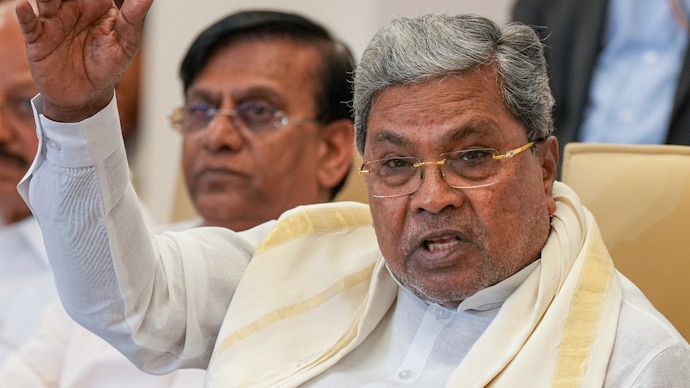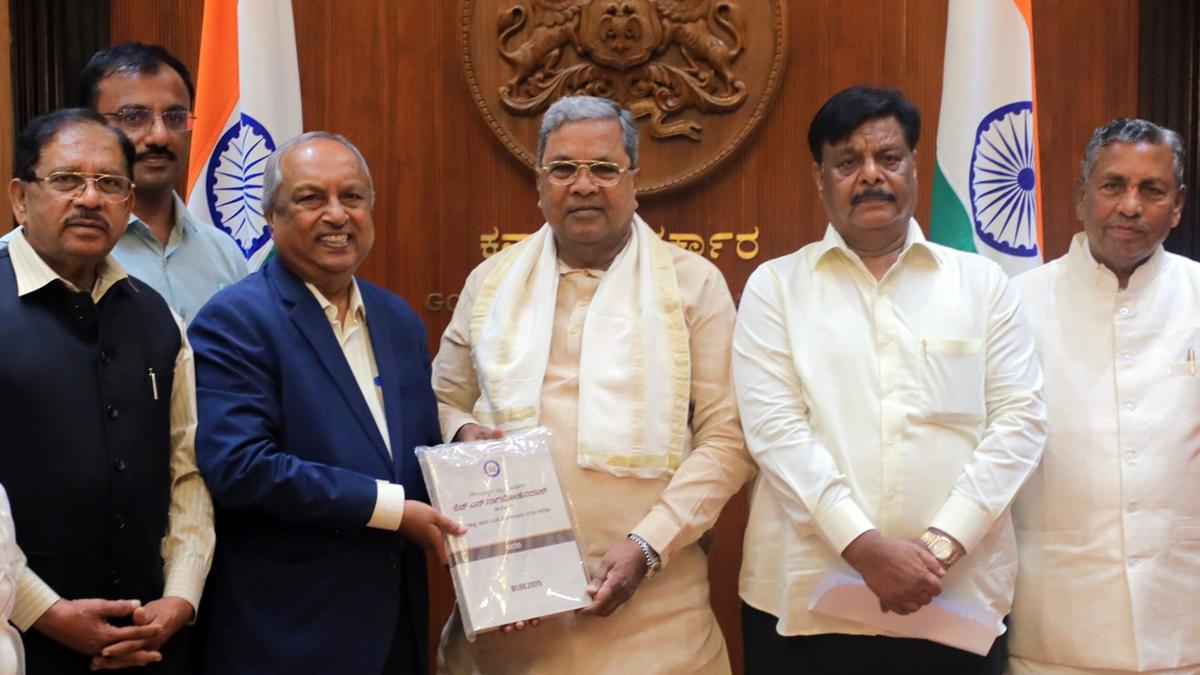In a landmark move, the Karnataka cabinet has approved internal reservation for Scheduled Castes (SCs), dividing quotas among four distinct communities to ensure fair representation. The decision, long awaited by many marginalized groups, has sparked both relief and debate across the state. Proponents argue that the policy will correct decades of imbalance in education and employment opportunities, while critics caution against deepening intra-community divides. The cabinet’s approval marks a significant step toward addressing structural inequalities, positioning Karnataka as a state willing to confront difficult questions of justice and representation.
The decision stems from years of petitions, protests, and commissions highlighting disparities within the SC category. Communities like Madigas, Bhovi, Lambani, and others had argued that a uniform quota often left them underrepresented, as benefits concentrated in certain sub-groups. By dividing reservations internally, the state aims to distribute opportunities more equitably. However, the cabinet move has already drawn challenges, with some groups fearing their share could shrink. This balancing act reflects the complexity of caste politics in Karnataka, where competing historical grievances must coexist within the framework of social justice.
Political observers see the move as both a moral and strategic step. With elections on the horizon, ensuring fair distribution of reservation benefits is also a way to secure voter trust. The cabinet emphasized that the measure was based on extensive studies and the recommendations of the Nagamohan Das Commission. Yet, legal challenges are expected, as reservation policies in India are often contested in courts. For now, Karnataka has set the stage for a new chapter in its reservation policy, one that may influence debates nationwide.


Stakeholder Reactions
The announcement has received a mixed but intense response from community leaders and activists. Supporters from marginalized sub-groups hailed the cabinet for recognizing their decades-long struggle for visibility. They believe this step will finally open pathways in government jobs, education, and political representation that were earlier dominated by a few sub-castes. On the other hand, leaders from relatively stronger SC groups expressed apprehension, warning that dividing quotas could fragment unity and weaken collective bargaining power. Protests and rallies are expected in both support and opposition in the coming days.
Political parties are also positioning themselves around the decision. The ruling government has portrayed the move as a courageous act of social reform, while the opposition is accusing it of being a calculated electoral maneuver. Experts believe both views carry truth: while the decision is rooted in addressing genuine inequities, its timing before elections makes it politically significant. National-level parties are closely observing the fallout, as Karnataka’s model could inspire similar demands elsewhere. For voters, however, the decision has stirred a mix of hope, anxiety, and curiosity about its long-term effects.
The approval of internal reservation for SCs in Karnataka reflects a long-standing struggle that has stretched across multiple decades. Various communities within the SC category have consistently voiced concerns that a blanket quota did not serve all equally. Leaders from marginalized groups, especially Madigas and Bhovis, have highlighted how dominant sub-castes benefited disproportionately from opportunities. By attempting to correct this imbalance, the government has signaled an effort to make affirmative action more inclusive. However, critics argue that introducing subdivisions could deepen fractures within the SC category, potentially weakening collective solidarity in the fight against discrimination.
Beyond social justice, the economic implications of this move are significant. Access to reservations often translates into better opportunities for government jobs, scholarships, and higher education placements. This redistribution could uplift thousands of families who have remained on the fringes of social mobility. For sub-castes that have long experienced exclusion despite falling under the SC umbrella, this decision opens new possibilities. Yet, the real challenge lies in ensuring the intended beneficiaries actually receive these opportunities without bureaucratic delays or manipulation. Effective monitoring will be crucial in translating policy into practical change on the ground.
The historical backdrop adds weight to this policy. Reports like those by the Nagamohan Das Commission clearly documented disparities and recommended internal reservation. Activists and academics have long pointed to the need for sub-categorization to prevent monopolization of benefits. By acting on these findings, the Karnataka cabinet has demonstrated responsiveness, but the issue is unlikely to be resolved quickly. Legal battles are almost certain, as groups with reduced shares may contest the move. Judicial intervention could either validate or stall the process, shaping the trajectory of social justice in Karnataka.

Public sentiment is another critical dimension of this decision. Many citizens, especially from disadvantaged sub-castes, welcomed the news with celebrations, seeing it as a long-overdue recognition of their struggles. Conversely, some protests have already begun, with groups feeling shortchanged in the restructured quota system. The streets of Karnataka may soon witness parallel demonstrations—both celebratory and confrontational—reflecting the intensity of emotions surrounding caste representation. These reactions underscore the delicate balance the government must maintain while navigating public expectations and political pressures.
Caste politics in Karnataka has always been a decisive factor in electoral outcomes, and this move will undoubtedly influence the state’s political landscape. The ruling party is likely to showcase this decision as evidence of its commitment to social justice. Meanwhile, opposition parties may attempt to portray it as a populist measure aimed at securing votes. Regardless of the political framing, the decision has already ensured that caste reservation will become a central issue in upcoming elections. Voters, especially from marginalized groups, will closely evaluate how effectively this policy is implemented.
The administrative framework required to operationalize internal reservation is complex. Government departments and educational institutions will need to adjust their systems to accommodate the revised quota structures. This could involve changes in recruitment policies, admissions criteria, and reporting mechanisms. Delays or mismanagement at this stage could dilute the policy’s effectiveness. Transparency, clear communication, and strict oversight will be necessary to avoid confusion or exploitation. The state government’s ability to manage these processes efficiently will determine whether the intended social impact is realized or reduced to a symbolic gesture.
The path ahead for Karnataka’s internal reservation for SCs will largely depend on judicial scrutiny and public acceptance. The Supreme Court has previously examined the legality of sub-categorization within SCs, and its eventual stance will be decisive in shaping the durability of this policy. If upheld, Karnataka could emerge as a pioneer in fine-tuning affirmative action to address intra-community inequalities. If struck down, however, it could trigger disappointment and unrest among groups who view this decision as a long-awaited justice. For now, the move symbolizes both progress and uncertainty, carrying deep social and political implications.
Future Outlook
The cabinet’s approval is only the first step, as implementation will involve detailed legal and administrative measures. Courts may be approached to challenge or seek clarity on the move, and bureaucratic adjustments will be required to reconfigure quotas. For communities long excluded from opportunities, the announcement feels like justice delayed but not denied. Yet, as history shows, reservation policies often create fresh debates alongside resolving old ones. Karnataka now stands at a critical crossroads where the success of this policy will depend on transparent implementation and sensitive handling of emerging disputes.

Experts caution that while internal reservation addresses distributional inequities, it does not eliminate the broader socio-economic challenges faced by SC communities. Poverty, lack of access to quality education, and entrenched discrimination continue to affect these groups regardless of sub-caste distinctions. Therefore, reservation must be complemented by parallel measures such as targeted welfare schemes, skill development programs, and anti-discrimination enforcement. Without these supplementary efforts, internal reservation may ease competition but fall short of creating transformative change. Policymakers must approach this decision as one component of a broader agenda for social justice.
Comparisons with other states also highlight the significance of Karnataka’s decision. States like Andhra Pradesh and Tamil Nadu have previously debated or implemented sub-categorization within SCs, with mixed outcomes. Observers believe Karnataka’s move could inspire similar demands in neighboring regions, particularly where disparities among SC groups are stark. If the model proves successful, it could reshape national debates on affirmative action and social equity. However, if it leads to prolonged legal disputes or social unrest, other states may hesitate to follow suit. Thus, Karnataka’s experience could serve as a blueprint—or a cautionary tale—for the nation.
The educational sector may see some of the most immediate effects of internal reservation. With sub-castes gaining more access to reserved seats in universities and professional courses, the profile of SC students in higher education could diversify significantly. This, in turn, might create a new generation of professionals and leaders from communities historically underrepresented even within the SC umbrella. Such progress could gradually weaken systemic barriers. However, ensuring these students are supported with mentorship, financial aid, and safe environments will be crucial to sustain their growth beyond mere entry into institutions.
Ultimately, the approval of internal reservation is not merely a policy adjustment but a reflection of Karnataka’s attempt to reconcile historical injustices with present-day realities. It highlights the government’s willingness to address sensitive issues, despite the risk of backlash. The move is emotionally powerful for marginalized communities who see it as recognition of their struggles. At the same time, it challenges society to confront the complexity of caste beyond simplistic categories. The coming months will test whether this bold step transforms lives as intended or becomes yet another chapter in India’s contested history of reservation.
Follow: Karnataka Government
Also read: Home | Channel 6 Network – Latest News, Breaking Updates: Politics, Business, Tech & More

